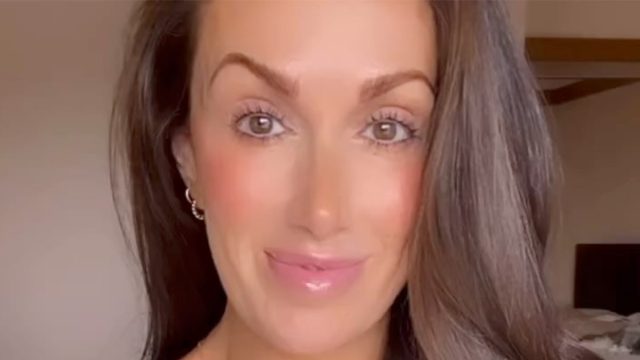Coach Reveals 4 Steps She Took to Drop Fat in Her 40s

Are you over 40, and the same tactics you used to burn fat when you were younger suddenly aren't working anymore? Shauna Theresa is a women's fitness and nutrition coach who helps women over 40 "boost metabolism, build strong, sculpted bodies and lose fat for life" using her STRONG method. In a new post, she reveals how she had to adapt her fat loss approach as she got older. "Fat loss was easier in my 40s after I did this," she writes.
Getting Into a Calorie Deficit and Staying There Didn't Work Anymore
"A BIG mistake I made for years, and see many women make, is we start eating in a calorie deficit and STAY there," she reveals. "The big problem with that is your body will eventually adapt to that lower calorie intake."
It Down Regulate Metabolism
"This means it will down regulate metabolism, making fat loss HARDER and gaining fat EASIER," she says. "Not to mention, building muscle while in a deficit is NOT easy, which is why maintenance phases are a critical part of creating that 'toned' look!"
A Maintenance Phase Is Key
"Without a plan for your dieting phase, especially a starting or exit strategy, you won't get the results you want. I've been there. But here is how I lost fat at age 40, kept it off and maintain it without living on a diet! (Ps. This is how I help clients!)" she writes, heading into the four steps she took.
RELATED: 12-3-30 Walking Method: 20 Proven Tips to Lose Weight Faster
Step 1: Prime Your Body for Fat Loss
The first step? "Before starting a fat loss phase I primed my body to lose fat by taking a break from dieting," she reveals. This helped "up-regulate metabolism" and ensured her "body was not in a stressed state."
Step 2: Time You Fat Loss Phases
Step two? "Fat loss phases were timed, with breaks as needed," she writes. They also "included prioritizing protein and heavy weight lifting (this sends a signal to the body to preserve muscle and burn fat)," she says.
RELATED: 8 High-Protein Foods with Nearly Zero Calories That Melt Fat
Step 3: Reverse Diet
The third step may surprise you. "Fat loss phases ended with a reverse diet," she reveals. This "strategically and slowly increased calories allowing my body to adjust and adapt to a higher calorie amount without gaining fat. (A step most miss.)" she adds.
Step 4: Maintenance Phases
The last step? "My maintenance phases were times I took advantage of more calories," she reveals. She added that she "put them to use to build more muscle, maybe even eating slightly over with calories with the intention of adding muscle, creating a more 'toned' look and improving metabolism."
You Can Maintain Weight Loss Without Dieting Forever
"This application of steps has helped me lose fat, build muscle, and maintain results while avoiding being stuck in low calorie land! You are NOT meant to live in a deficit. It should be a temporary means to an end. A step in the process," she adds at the end of her post. "Your plan should include times when you are eating MORE so you can prevent metabolic slow down and crashing hormones. It is possible for you to maintain your weight loss without 'dieting' forever. Promise!" And if you enjoyed this article, take advantage of these 15 Quick Ways to Lose Body Fat Percentage in a Week.




